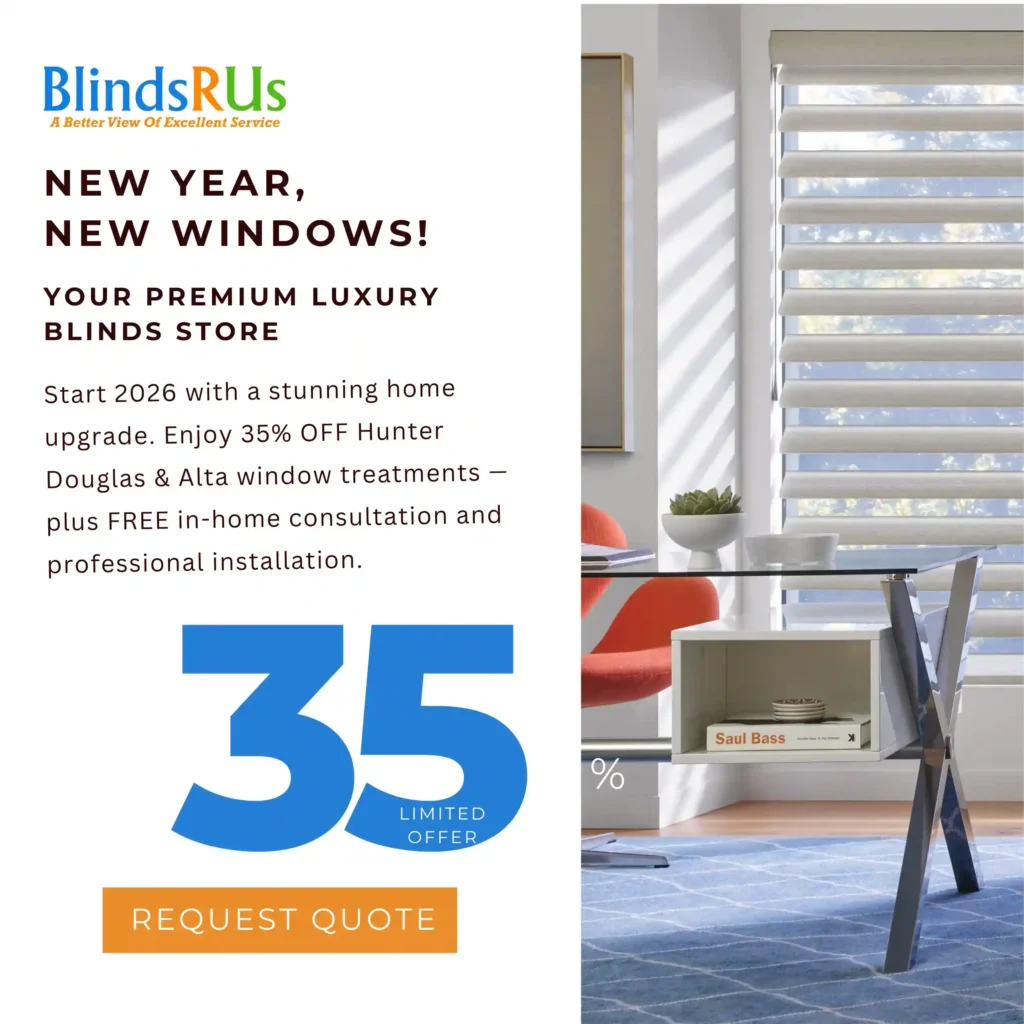The living room is the heart of the home, a place where you relax, entertain guests, and spend quality time with family. Window treatments play a crucial role in setting the tone for this space, and blinds are a popular choice due to their versatility, functionality, and aesthetic appeal. With so many styles, materials, and features to consider, selecting the best blinds for your living room can be overwhelming. This guide will help you make an informed decision to enhance your living room’s comfort and style.
Assess Your Needs and Preferences
Before choosing blinds, consider the primary purpose they will serve in your living room:
- Light Control: Do you want to let in natural light or block it out completely?
- Privacy: Is your living room facing the street or neighboring properties?
- Style: What design elements do you want to complement or enhance?
- Energy Efficiency: Do you need blinds that provide insulation to reduce energy costs?
Answering these questions will help you narrow down your options.
Explore Different Types of Blinds
Blinds come in a variety of styles, each offering unique benefits. Here are some popular options for living rooms:
a – Venetian Blinds
Venetian blinds feature horizontal slats that can be tilted to control light and privacy. Made from materials like wood, aluminum, or PVC, they offer a classic look suitable for various interior designs.
- Pros: Versatile, easy to maintain, available in many colors and finishes.
- Cons: May require regular dusting to keep them clean.
b – Vertical Blinds
Vertical blinds have vertical slats that are ideal for large windows or sliding glass doors. They provide excellent light control and are available in fabric, vinyl, or aluminum.
- Pros: Great for wide windows, easy to operate.
- Cons: May not suit smaller windows.
c – Roller Blinds
Roller blinds consist of a single piece of fabric that rolls up neatly when not in use. They are available in various colors, patterns, and materials, including blackout options.
- Pros: Sleek and modern, great for light control.
- Cons: Limited adjustability compared to slatted blinds.
d – Roman Blinds
Roman blinds are fabric-based and fold up into pleats when raised. They add an elegant touch to traditional or contemporary living rooms.
- Pros: Stylish and luxurious, available in a range of fabrics.
- Cons: Less effective for precise light control.
e – Cellular (Honeycomb) Blinds
These blinds have a unique honeycomb design that traps air, providing excellent insulation. They are perfect for energy-conscious homeowners.
- Pros: Energy-efficient, available in light-filtering and blackout options.
- Cons: Typically more expensive than other types of blinds.
Choose the Right Material
The material of your blinds affects their appearance, durability, and maintenance. Common materials include:
- Wood: Adds warmth and a natural feel, ideal for traditional or rustic decor.
- Faux Wood: Offers the look of wood with added moisture resistance, great for humid climates.
- Aluminum: Sleek and durable, suitable for modern interiors.
- Fabric: Provides a soft and cozy touch, available in various patterns and colors.
- Vinyl: Affordable and easy to clean, perfect for high-traffic areas.
Consider Your Living Room’s Style
The design of your blinds should complement your living room’s overall aesthetic.
- For a minimalist look, choose simple roller blinds in neutral tones.
- If you prefer a cozy and traditional vibe, opt for Roman blinds in textured fabrics.
- For modern and sleek interiors, go for aluminum Venetian blinds or cellular blinds in bold colors.
Factor in Light and Privacy Needs
Your living room’s location and natural lighting will influence your choice:
- If your living room gets a lot of sunlight, consider blackout blinds or blinds with UV protection to prevent furniture fading.
- For a balance between privacy and light, Venetian or cellular blinds work well, allowing you to adjust slats for optimal control.
Prioritize Energy Efficiency
Blinds can help regulate the temperature in your living room:
- Cellular blinds are excellent for insulation, keeping your living room warm in winter and cool in summer.
- Solar blinds are designed to reduce heat while maintaining a view, making them perfect for sun-filled spaces.
Look for Additional Features
Modern blinds come with innovative features to enhance functionality:
- Motorized blinds: Ideal for large windows or hard-to-reach areas.
- Smart blinds: Can be controlled via smartphone or voice commands, adding convenience and luxury.
Measure Accurately
Proper measurements are key for a perfect fit. Measure the width and height of your windows and decide if you want an inside mount (fits within the window frame) or an outside mount (covers the frame for added coverage).
Why Professional Guidance MattersTo Transform Your Living Room
Selecting and installing the right blinds can be a complex task. Consulting with professionals ensures that you choose the perfect style, material, and fit for your living room. Experts can also provide insights into trends, durability, and functionality to help you make the best decision.
At Blinds R Us, we offer an extensive range of high-quality window blinds, blinds for windows, and windows blinds to suit every style and need. Serving Westchester County, New York, we provide expert consultation, precise measurements, and professional installation services to elevate your living room’s comfort and aesthetics.
Contact us today to find the perfect blinds for your home!


